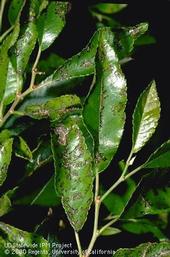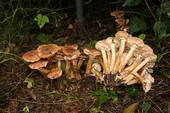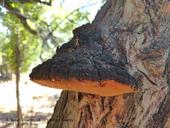- Author: Karey Windbiel-Rojas
![Thinning canopy is an early sign of Bot canker. [Credit: J. Downer]](https://ucanr.edu/blogs/UCIPMurbanpests/blogfiles/93035small.jpg)

(Credit: Jack Kelly Clark)
Anthracnose is a group of fungal diseases that infect many trees and shrubs, causing dark lesions on leaves and cankers on twigs and stems. In some areas of California, vegetables and turfgrass can also be infected with anthracnose.
Symptoms of anthracnose vary by plant host and weather conditions. High humidity and dense canopies can exacerbate this common disease. Management relies on planting resistant cultivars of landscape plants along with careful maintenance of susceptible cultivars, such as pruning and removal of fallen leaves and twigs.
Authors Jim Downer (UCCE Ventura County), Steven Swain (UCCE Marin County), and Amanda Crump (UC Davis Plant Sciences) recently revised

What is Armillaria Root Rot?
Armillaria root rot is a severe fungal disease that affects trees, woody plants, and some herbaceous plants including palms and succulents.
Also known as oak root fungus, Armillaria root rot can rapidly kill trees and presents a challenge to management since infected woody roots can persist for years underground. No plants are completely immune to Armillaria root rot, so prevention is key. Deeply planted trees are often more susceptible to this disease.
The distinctive “honey mushrooms” growing from the base of a tree signals an infection, but they may not always be present. Other visible symptoms include flat cankers on the trunk, wilting, and canopy...
- Author: Elaine Lander

Landscape trees provide welcome shade, fruit, homes for wildlife, and even a place for kids to climb. But if the wood is damaged, disease-causing fungi can infect the tree. A number of fungal diseases decay wood in both tree branches and trunks, weakening and sometimes killing the tree. Wood decay can be hazardous when infected branches and trunks fall.


